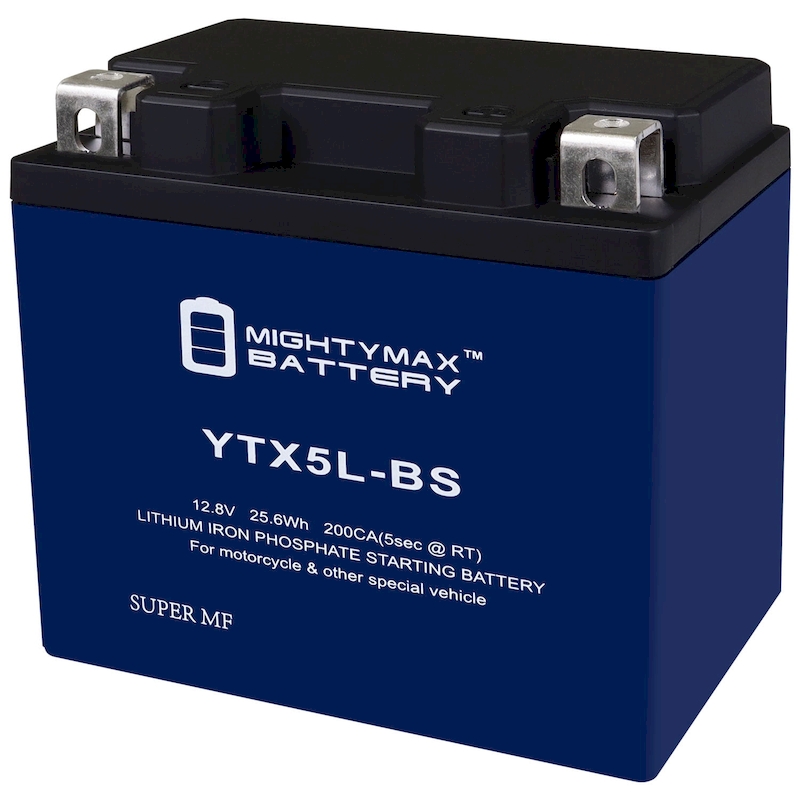When to Change Your Car Battery: A Guide to Battery Care
As a car owner, understanding when to change your car battery is crucial to maintaining your vehicle’s performance and reliability. The battery plays a vital role in starting your car, powering electronics, and keeping systems running smoothly. However, batteries do not last forever. With time and usage, they can deteriorate, leading to a range of problems—from slow starts and electrical issues to complete failure. While many drivers might overlook battery maintenance, being proactive can save you from inconvenient breakdowns and costly repairs later on. This comprehensive guide will explore key factors to consider when determining the right time to change your car battery, signs of battery failure, tips for prolonging battery life, and best practices for battery replacement. By understanding your battery better, you can ensure your car remains reliable on the road.

Understanding Car Battery Basics
Before diving into when to change your car battery, it’s important to understand how car batteries function. Knowing the basics can provide valuable context for recognizing when your battery may need attention.
The Role of the Car Battery
The car battery serves multiple critical functions. At its core, its primary role is to store electrical energy. This energy is essential for starting the engine and powering the vehicle’s electrical components when the engine is off. When you turn the key in your ignition, your battery sends a burst of electricity to the starter motor, initiating the engine’s operation.
In addition to starting the engine, the battery also powers various vehicle systems, including the radio, lights, air conditioning, and electronic display. Therefore, having a functioning battery is essential for overall vehicle performance.
Types of Car Batteries
Understanding the types of batteries can help inform your decisions regarding replacement. The two most common types of car batteries are:
- Lead-Acid Batteries: These traditional batteries are the most commonly used in vehicles. They contain lead plates submerged in sulfuric acid. While they are reliable and affordable, they generally last around three to five years, depending on usage and environmental factors.
- AGM Batteries: Absorbent Glass Mat (AGM) batteries are a type of lead-acid battery that features enhanced construction. They contain a fiberglass mat that absorbs the electrolyte, allowing for better shock resistance and a longer lifespan—typically lasting between four and eight years. AGM batteries are often used in high-performance or luxury vehicles that demand higher power levels.
Battery Lifespan
The lifespan of a car battery can vary based on several factors, including climate conditions, driving habits, and the vehicle’s electrical demands. Generally speaking, most batteries last between three and five years. However, in some cases, batteries can last longer with proper care and attention.
Signs That Indicate When to Change Your Car Battery
Recognizing the signs of a failing battery can help you determine when to change your car battery before it leads to a breakdown. Here are the most common indicators that it may be time for a new battery:
Slow Engine Crank
If your vehicle takes longer than usual to start, it may be a sign of a weakening battery. A slow engine crank occurs when the starter motor struggles to get enough power from the battery to turn over the engine. If you consistently notice this happening, it could be time to replace the battery.
Electrical Issues
A failing battery can lead to various electrical problems within your vehicle. If you experience dimming headlights, flickering dashboard lights, or malfunctioning electronic accessories (like the radio or power windows), these could be symptoms that your battery is losing its charge.
Warning Light
Most modern vehicles are equipped with a battery warning light on the dashboard. If this light illuminates, it indicates a problem with the charging system or the battery itself. Ignoring this warning can lead to bigger issues; therefore, it should be addressed promptly.
Corrosion Buildup
Examine the battery terminals and cables for any signs of white, ashy corrosion. This buildup can hinder the flow of electricity, leading to starting issues and poor performance. While corrosion can sometimes be cleaned, recurring buildup may indicate that the battery is nearing the end of its life.
Age of the Battery
If your battery is approaching the three-to-five-year mark, it’s a good idea to have it tested, even if it seems to work fine. Many auto parts stores offer free battery testing, and knowing its condition can help you plan for a replacement.
Factors Affecting Battery Life
Understanding the factors that impact the lifespan of your car battery can help you maximize its longevity. Here are some key elements to consider:
Climate Conditions
Extreme temperatures can significantly influence battery life. Cold weather can cause the battery’s capacity to drop, making it harder to start the engine. Conversely, excessive heat can lead to faster battery deterioration. If you live in an area with extreme weather conditions, you may need to replace your battery more frequently.
Driving Habits
Frequent short trips can prevent the battery from fully charging, leading to premature wear. Additionally, if your car sits idle for extended periods, the battery may not receive adequate charging from the alternator. Regular long drives can help maintain battery strength and longevity.

Electrical Demands
Modern vehicles come equipped with numerous electronic gadgets and systems that can put a strain on the battery. If you use a lot of electrical accessories while the engine is off—such as playing the radio—this can drain the battery more quickly. Always ensure that accessories are turned off before exiting your vehicle.
Maintenance Practices
Regular battery maintenance is essential for prolonging its life. Routine inspections can help identify issues such as loose connections or corrosion. Additionally, using battery terminals that are clean and well-connected can improve overall performance.
How to Prolong the Life of Your Car Battery
Taking proactive steps to care for your car battery can help you extend its lifespan. Here are some effective tips for prolonging battery life:
Regular Inspections
Schedule routine battery inspections as part of your vehicle maintenance. Look for signs of corrosion, wear, and loose connections. Catching problems early can prevent unexpected battery failure.
Clean Battery Terminals
To clean battery terminals, disconnect the battery and use a mixture of baking soda and water to scrub any corrosion off with a toothbrush. Ensure the terminals are clean and dry before reconnecting.
Minimize Short Trips
To ensure your car battery charges effectively, try to minimize short trips where the engine doesn’t reach optimal operating temperature. Longer drives help keep the battery fully charged.
Limit Electrical Loads
When your vehicle is off, avoid using electrical accessories that can drain the battery. Always make sure to turn off headlights, radios, and other power draws before exiting the vehicle.
Invest in a Battery Maintainer
If you own an older vehicle or one that’s used infrequently, consider investing in a battery maintainer. This device can help keep the battery charged and in good condition, preventing it from dying due to inactivity.
Steps to Replace Your Car Battery
If you determine that it’s time to change your car battery, here are the steps to follow for a successful replacement:
Gather Necessary Tools and Supplies
Ensure you have all the required materials and tools on hand before starting:
- A new battery compatible with your vehicle
- Wrenches or socket sets to remove battery terminals
- Gloves and safety goggles for personal protection
Prepare Your Vehicle
Before you begin, ensure the vehicle is turned off and parked in a well-lit area. Open the hood and locate the battery. Make sure to identify the positive (+) and negative (-) terminals.
Disconnect the Old Battery
Using a wrench, loosen the bolt on the negative terminal; then remove the cable and secure it away from the battery. Repeat this process for the positive terminal. Always disconnect the negative terminal first to prevent electrical shorts.
Remove the Old Battery
Carefully lift the old battery out of the compartment. Be mindful of its weight; a typical car battery can weigh between 30-50 pounds. Place it in an area where it won’t interfere with your work.
Install the New Battery
Position the new battery in the same spot as the old one, ensuring it sits squarely in the battery tray. Connect the positive lead first, then follow it with the negative terminal. Secure both terminals tightly but carefully to avoid damage.
Final Checks
Before closing the hood, double-check that everything is secured properly. Make sure clamps are tight and that there is no corrosion present on the terminals.
Dispose of the Old Battery
Lastly, take the old battery to a recycling center or an auto parts store that offers battery recycling. Proper disposal prevents environmental contamination and helps promote recycling.
When to Seek Professional Help
While many car owners can replace their batteries with a bit of guidance, there are instances when seeking professional help is advisable. Here are some scenarios where a mechanic might provide better insight:
Complex Electrical Issues
If you encounter ongoing electrical issues that do not improve after a battery change, consult a professional. They can conduct a thorough analysis of the vehicle’s electrical system, which may be affected by factors beyond just the battery.
Difficulty Removing the Battery
If you find yourself struggling to remove the old battery due to location or configuration issues, it may be best to let a professional handle it. Trying to forcefully remove the battery can lead to damage to surrounding components.
Unusual Battery Behavior
If your new battery exhibits strange behavior—such as draining quickly suddenly or causing persistent warning lights—consulting a mechanic can help identify underlying issues. They possess the tools and expertise to diagnose problems effectively.

Conclusion
Knowing when to change your car battery is essential for maintaining your vehicle’s performance and reliability. By understanding the role of your car battery, recognizing signs that indicate a need for replacement, and practicing proper maintenance, you can ensure that your battery operates efficiently for an extended period.
When the time comes to change your battery, following the outlined steps can help you handle the process smoothly. Remember, staying aware of your battery’s condition and addressing issues proactively can prevent inconvenient breakdowns and costly repairs. By fostering a relationship of care and attention with your vehicle, you’ll enjoy a smoother driving experience for years to come. When in doubt, don’t hesitate to consult a professional for assistance, ensuring that your car remains reliable on the road.
